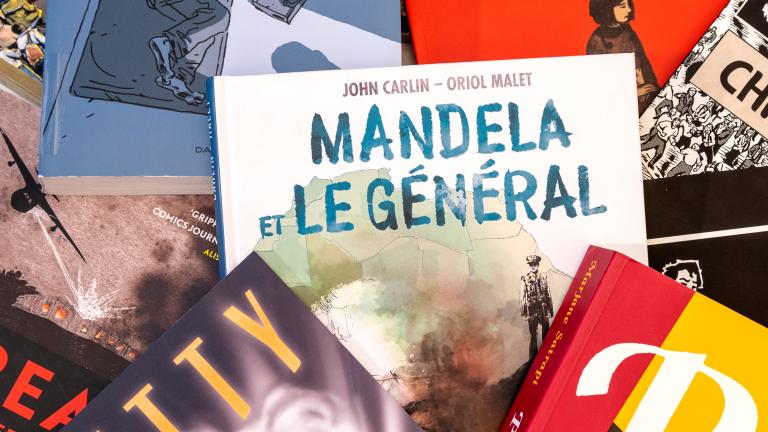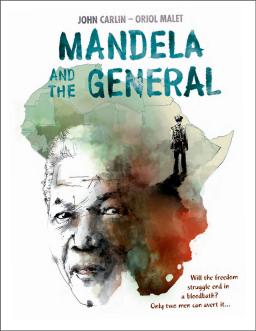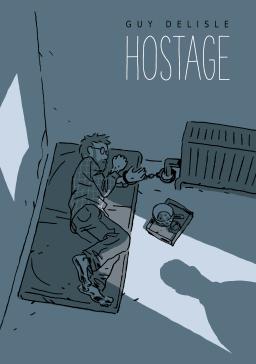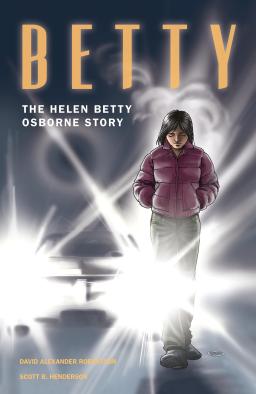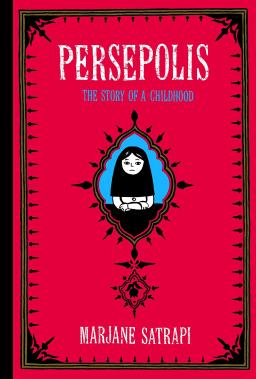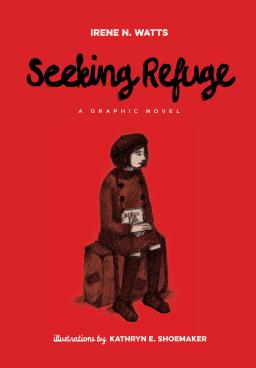These days, it seems that comic books and graphic novels are everywhere. You can find them in bookstores, libraries and even art galleries. Adaptations of popular graphic novels regularly appear on television and break box‐office records at the movies.
What is even more exciting, however, is that there are graphic novels that use the creative and compelling tools of visual storytelling to tackle human rights issues in ways that can appeal to every taste, interest and age range.
The Museum’s Carte International Reference Centre has a growing collection of graphic novels that focus on topics related to human rights. As there are so many excellent works in our collection, it can be difficult to know where to start reading.
To help narrow your choices, we’re recommending eight graphic novels from our collection that are well worth a read, and which are recommended for adolescent to adult audiences. Each one is very different; some deal with history, others with contemporary issues. Some are epic in scope, while others are deeply personal. Each one uses its own unique art style to tell a powerful human rights story. What these books all have in common, however, is the fact that once you start reading, you’ll find them very hard to put down.
Mandela and the General
John Carlin and Oriol Malet (ill.)
John Carlin is a journalist and author who was the South Africa bureau chief for the British newspaper The Independent from 1989–1995. For much of his career, he has focused his work on South African politics, and in 2008 published the book Playing the Enemy: Nelson Mandela and the Game that Made a Nation, which was later made into the film Invictus. Both the book and film illustrate how in 1995 Nelson Mandela used the Rugby World Cup as a tool to assist in the process of national reconciliation after decades of apartheid, a system of white supremacy that divided South Africa into racial categories.
Carlin’s most recent work, Mandela and the General, similarly deals with the concept of reconciliation. In this case, the story involves Mandela working to avoid mass bloodshed in the immediate post‐apartheid period as white Afrikaners mobilized to oppose the new government with armed resistance. Mandela met with their leader, a former Afrikaner general, and convinced him that a race war was not the way forward.
Beautifully illustrated by Oriol Malet, the book highlights Mandela’s ability to use empathy to understand his opponents and confront them without violence.
Also available in French – Mandela et le général.
Hostage
Guy Delisle
Guy Delisle is a Canadian cartoonist well known for his autobiographical graphic novels where he recounts his experiences visiting and living in Myanmar (formerly known as Burma); Pyongyang, North Korea; Shenzen, China; and Jerusalem, Israel.
His most recent work, Hostage, is a little different, however. It is the true story of Christophe André, a humanitarian aid worker taken hostage in Chechnya in 1997. The book details the 110 days that he spent in captivity and immerses the reader into an uncertain and frightening world. Delisle moves the story forward by focusing on the harrowing tedium of being disconnected and kept immobile, coupled with André’s attempts to maintain a sense of self and humanity while refusing to reveal his inner turmoil and frustration to his captors.
Also available in French – S’enfuir: Récit d’un otage.
Threads from the Refugee Crisis
Kate Evans
Kate Evans is a cartoonist, artist and activist from the United Kingdom. She has written on topics ranging from her experience as an environmental activist to women’s reproductive health. She is also the author of Red Rosa, a graphic biography of Rosa Luxemburg.
Her 2017 work Threads from the Refugee Crisis describes her experience volunteering to support refugees in the city of Calais, France in 2015 and 2016. She weaves together the personal stories of people forced to leave their homes in the Middle East, Africa and elsewhere, with details of daily life in the refugee camp that these same people were now calling home. Volunteers are shown working alongside the people living in the camp to improve their conditions by providing them with shelter, sustenance and companionship. Kate Evans gives the refugee crisis a human face, showing the brief but profound connections she made with the men, women and children whose stories she tells and illustrates.
This title is only available in English.
March
John Lewis with Andrew Aydin and Nate Powell (ill.)
John Lewis is an African American United States Congressman and civil rights leader. As a young man in the 1950s and 1960s, he joined thousands of others in the struggle against racial hatred, segregation, discrimination and inequality, including taking part in the famous Selma to Montgomery marches.
Lewis worked with co‐author Andrew Aydin and illustrator Nate Powell to tell the story of his involvement in the African American civil rights movement. The result was the epic‐in‐scope three‐volume graphic novel March.
The book follows the young Lewis from his childhood in Alabama, and through adolescence and adulthood as he becomes deeply involved in the civil rights movement, working alongside Dr. Martin Luther King and taking on a leadership role in the Student Nonviolent Coordinating Committee. The book does an excellent job of placing Lewis’ personal story within a specific historical context, and as such it is both a personal memoir and historical retelling of this turbulent and violent period of the 20th century.
Also available in French – Wake Up America
Christie Pits
Jamie Michaels and Doug Fedrau (ill.)
Jamie Michaels and Doug Fedrau, both from Winnipeg, are the writer and illustrator of Christie Pits, a graphic novel that depicts the events leading up to the Christie Pits Park race riot in 1933 in Toronto.
Months of tension had seen growing anti‐Jewish and xenophobic sentiment in Toronto, including the establishment of a “Swastika Club” dedicated to harassing Jews and immigrants and keeping them away from the city’s beaches. Protests led by young Jewish residents resulted in antisemitic counter‐protests.
On August 16, following a baseball game between two local teams, one composed mostly of Jewish players, a group of men unfurled a homemade swastika flag and chanted “Heil Hitler.” Jewish and Italian players from both teams, as well as some spectators, rushed to destroy the flag, and the ensuing struggle resulted in a four‐hour long riot involving up to 10,000 people.
This story of resistance against bigotry and hatred focuses on the daily lives and interactions of a group of young men and women to explore a time in Canadian history when antisemitism and intolerance were blatant and unconcealed. The story remains very relevant in today’s world, where hate speech and prejudice still need to be confronted.
This title is only available in English.
Betty: The Helen Betty Osborne Story
David Alexander Robertson and Scott B. Henderson (ill.)
David Alexander Robertson is an award‐winning author of books, graphic novels and novels for children and teens. Scott B. Henderson is an author and illustrator known for books such as the fantasy series The Chronicles of Era. Their collaborative work Betty: The Helen Betty Osborne Story recounts the true story of Betty, a young Indigenous woman who was brutally murdered in 1971 in The Pas, Manitoba by four men. Her killers were only brought to justice 15 years later, in 1986.
The book is a powerful indictment of the racism, sexism and indifference that has led to the epidemic of murdered and missing Indigenous women and girls. The publisher, Portage & Main Press, has made available a free Teacher’s Guide to Student Inquiry to support the treatment of the book in classroom settings.
This title is only available in English.
Persepolis
Marjane Satrapi
Marjane Satrapi is an acclaimed comic artist, writer, actor and filmmaker who was born in Iran but immigrated in her early 20s to France, where she still resides and works.
Her autobiographical work Persepolis begins when she is 10 years old in 1980, the year after the Iranian Revolution installed an Islamic republican government led by the Ayatollah Khomeini. Her secular, middle‐class family finds itself increasingly at odds with the regime, and they witness the repression, harassment, imprisonment and execution of acquaintances, friends and family members.
Persepolis and its sequel, Persepolis 2 (issued together as one volume in French), recount her childhood in Iran, her adolescence abroad in Europe when she left her family to attend school, her return to Iran as an adult, and her ultimate decision to make her home in Europe. Hers is a relatable, personal story that was shaped by – and offers readers insight into – major historical events whose impacts are still felt to this day.
Also available in French – Persepolis.
Seeking Refuge
Irene N. Watts and Kathryn E. Shoemaker (ill.)
Irene N. Watts, a children’s book and play author, and Kathryn E. Shoemaker, an illustrator of books for children, have collaborated on the book Seeking Refuge, a graphic novel that tells the story of a young girl fleeing Nazi Germany on a kindertransport, one of a series of efforts to rescue Jewish children by bringing them to Britain between 1938 and 1940.
Separated from her family, 11‐year old German Jewish refugee Marianne arrives in England in 1938 and is moved from home to home, longing for the caring and familiar presence of her mother. Though experiencing the grief of being away from her family, and uncertain of their fate and whether she will ever see them again, she nonetheless remains strong throughout as she waits and hopes to be reunited with them.
This title is only available in English.
And there you have it: eight amazing graphic novels that will keep you reading for some time. There are many more powerful graphic novels that focus on human rights stories, and many of them are likely available at your local library or bookstore.
Author
Stephen Carney is the Museum’s Librarian and Digital Asset Manager.
Suggested citation
Suggested citation :
Stephen Carney. “Drawing the truth: Eight meaningful graphic novels.”
Canadian Museum for Human Rights.
Published
February 14, 2020. https://humanrights.ca/story/drawing-truth-eight-meaningful-graphic-novels
